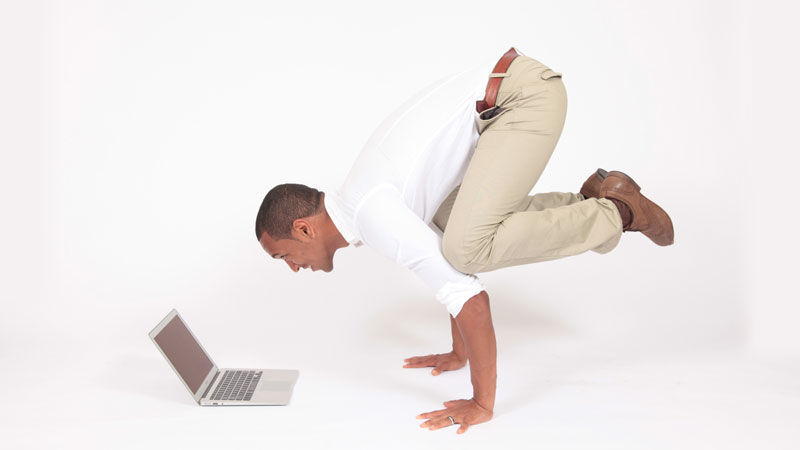First of all, what’s the difference between mindfulness and meditation?
They’re closely related but slightly different. Meditation can be viewed as a way to clear the mind, let go, and achieve peace and stillness within. Mindfulness is being presently and actively aware of feelings, thoughts, behavior, etc., in a non-judgmental way. The blend of the two techniques is often referred to as “mindfulness meditation.”
More and more studies have shown direct links between meditation and health benefits. Recently, researchers at Johns Hopkins found that eight weeks of meditation are just as effective as taking medication when treating depression, anxiety and pain.
The physical benefits include lower blood pressure, increased serotonin to improve your mood, an enhanced immune system and increased energy. In addition to the physical benefits, the mental benefits of meditation encompass emotional stability, increased creativity and happiness, enhanced intuition, and overall peace of mind.
How Does It Work?
Neuroimaging studies have shown that meditation does indeed generate actual changes in several areas of the brain:
- Superior longitudinal fasciculus and corpus callosum: communication within and between brain hemispheres
- Hippocampus: memory formation and emotional response
- Rostrolateral prefrontal cortex: awareness of thinking, introspection, and processing of complex information
- Anterior cingulate cortex and mid-cingulate cortex: self-regulation, emotional regulation, attention
- Sensory cortices and insular cortex: processing of tactile information
The changes appear to affect density and thickness of brain tissue, white matter fiber density, and cortical surface area as well as brain activation patterns.
Is It Easy To Do?
A meditation or mindfulness practice doesn’t need to take much time and can greatly affect your attitude, perspective and ability to effectively cope with stress throughout your day. Often a few minutes of meditation can save you hours of stress later as you’re able to more productively handle challenges that arise. Meditation is a life-long habit, and you’ll find the most benefit when practiced regularly. Allow yourself to refocus if at times you sway from a regular commitment.
Try integrating some of the following techniques most days of the week to get the most benefit:
- Set aside 5-10 minutes each day for calm and stillness. Make it a habit.
- Begin by concentrating on your breath to slow your heart rate, relax your muscles and focus the mind. Stretching can also help prepare the mind and body, as you loosen muscles and tendons and begin the process of looking inward.
- Notice when frustrating feelings come up and make meditation an active process focusing your attention on a single point.
- Experiment with sitting, lying down, opening or closing the eyes, to see which type of meditation feels most comfortable for you.
- Listen to guided meditations. There are many free sessions available on YouTube or smartphone apps.
- Integrate meditation into any moments during the day when mindfulness and breath could help you get through stress or challenges.
Is It Useful in a Corporate Setting?
Meditation can also be incorporated into corporate wellness programs along with other elements promoting a healthy, holistic and productive lifestyle. Its personal benefits can certainly be extended to the work environment.
A study found that mindfulness can be beneficially associated with employee well-being in terms of emotional exhaustion, job satisfaction, and psychological need satisfaction. Positive effects were also seen with job performance, as measured by task performance, organizational citizenship behaviors, and deviance.
These results suggest a potentially important role of mindfulness in the workplace. The study also found that organizational constraints and organizational support predicted employee mindfulness, pointing to the important role that the organizational environment may play in facilitating or hindering mindfulness at the workplace.
Also, for hardworking folks on the go, there are some different practices that can be adopted, many of which are available for tablets and smartphones:
- Themed sessions on aspects such as sleep and stress
- Quick meditations to work into a busy schedule
- Concentrated exercises to apply in high-stress situations
If meditation/mindfulness is included in an existing corporate wellness program, the activities will be set and ready to go. If you’re thinking about creating your own, here are some guidelines:
- Clearly define the program, what you want to achieve and how you will evaluate results
- Understand your organizational culture and their current familiarity with meditation
- Develop a formal proposal for the program with details on goals, participants, program elements, targeted benefits and measurement criteria
- Select an individual, preferably at an executive level, to endorse the project and be its champion
- Stay the course and patiently encourage participation through a variety of communications
Whether you’re considering meditation and mindfulness on an individual basis or participation in a program where you work, the benefits appear strong. Talk to someone you know who has adopted these practices and found them valuable. Read up about it. In today’s fast-paced world, it could be what you’re looking for to help create the peace and productivity we all seek.



